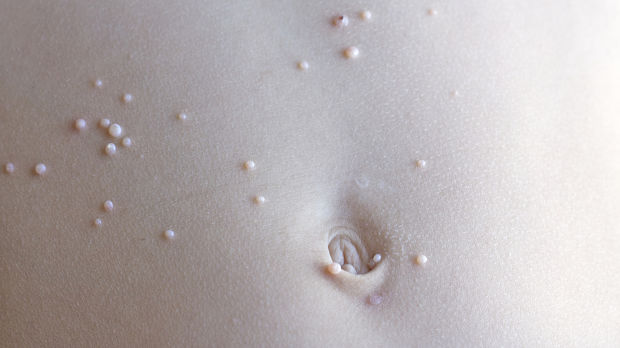Can You Treat Molluscum Contagiosum with Potassium Hydroxide?
Molluscum contagiosum (MC) is one of the most common skin infections in children. It is a viral infection caused by a human-specific Poxvirus. Though it is eventually self-clearing, treatment options include curettage and cryotherapy or the use of topical therapies such as salicylic acid, tretinoin, cantharidin, podophyllotoxin, and potassium hydroxide (KOH). However, there is limited evidence that any of these treatments are more effective than watchful waiting. A recent study compared the efficacy and safety of different concentrations of KOH versus a placebo administered once daily for a two month period.
Fifty-three children participated in the randomized clinical trial. They received aqueous solutions of either KOH 15%, KOH 10%, or a placebo and were evaluated at baseline and at four follow-up visits on days 15, 30, 45, and 60. The primary outcome was a complete clearing of lesions at 60 days.
The results showed that KOH 10% and 15% were both effective in achieving complete clearance of lesions, but that there was greater tolerability in the KOH 10% group. Both concentrations were more effective in clearing lesions than the placebo. The authors conclude that though none of the subjects reported severe adverse events, after taking into account the efficacy and tolerability, they recommend using KOH 10% for MC treatment in children.
